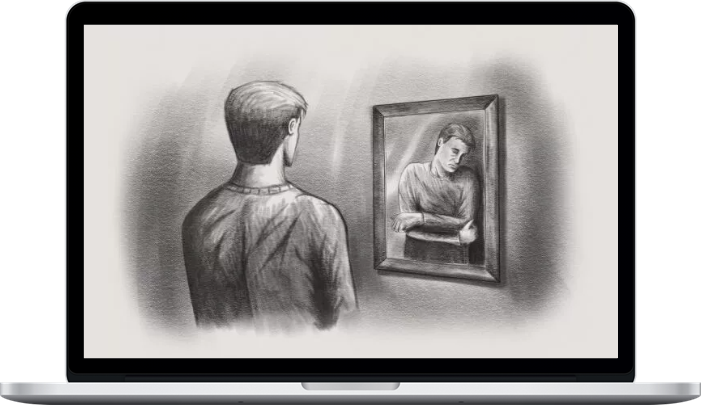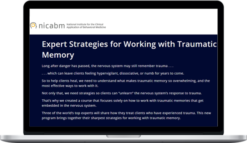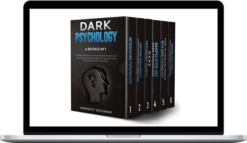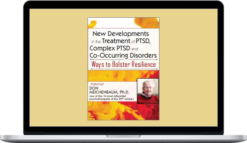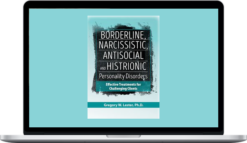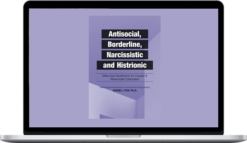NICABM – How To Work With Shame
$197.00 $37.00
Total Sold: 3
»Instant Delivery
Description
NICABM – How To Work With Shame

Successful Ways to Work With Clients Who Struggle With Deep Feelings of Shame.
When a client experiences shame, they live in constant fear of being rejected. And they become trapped in the avoidance strategies they create to escape the pain.
However, shame left untreated grows more powerful. And it can often lead our clients into behaviors that invite even greater shame.
But to effectively work with shame, we have to understand its neurobiology and why it’s so difficult to erase its deep tracing on the nervous system. We need to know why shame vigilantly protects itself, and how our traditional treatments may be sustaining shame or driving it even deeper.
That’s why we’ve brought together 19 of the top experts in our field to bring you…
What you’ll learn in How to work with shame
How to Break the Power of Shame by Engaging it
Kelly McGonigal, PhD Marsha Linehan, PhD
Bill O’Hanlon, LMFT Joan Borysenko, PhD
- The one counterintuitive technique that removes the fear of rejection from shame
- The most common type of shame (and why clients often believe they caused it)
- How to approach treatment when a client’s shame is legitimate
The Way a Shame Posture Impacts Emotions (And How to Bring Clients Out of It)
Peter Levine, PhD Bill O’Hanlon, LMFT
Ron Siegel, PsyD Kelly McGonigal, PhD
- Why a posture of shame looks identical to a posture of trauma
- How to adjust your office seating to avoid triggering your client’s shame
- A guided exercise to help bring clients out of a posture of shame
How to Work With Shame When it’s Connected to Trauma
Part 1: A Way to Heal Trauma-Based Shame Using a 3-Dimensional Space
Bessel van der Kolk, PhD Bill O’Hanlon, LMFT
-
- The “meaning-making” system that allows shame to take over a client’s life
- Why differentiation is so crucial in eliminating shame
Part 2: Rewiring the Body’s Reaction to Shame and Trauma
Pat Ogden, PhD
-
- How attachment shame can lead to broken adult relationships
- How to pull a client out of hypoarousal when shame causes them to dissociate
- How to shift the way a client physically organizes their history of shame
How to Shift Clients Out of Feelings of Unworthiness
Rick Hanson, PhD Ron Siegel, PsyD
Kelly McGonigal, PhD Bill O’Hanlon, LMFT
- Why it’s crucial to approach shame differently for introverts and extroverts
- How to use neuroplasticity to erase the old learning that promotes shame
- Why clients need to tolerate feelings of shame before undoing them
How to Work With the Inner Voice of Shame
Richard Schwartz, PhD Joan Borysenko, PhD
- The 2-part phenomenon that creates shame
- The inner personality that you must approach first (so it doesn’t sabotage your work)
- The one thing you need to do to get the inner critic to voluntarily disarm
The 4-Part Skill That Can Build Trust With Your Client
Dan Siegel, MD Kelly McGonigal, PhD Ron Siegel, PsyD
- What happens when the hippocampus fails to integrate implicit memories
- The difficult choice point a neglected child faces that invites lifelong shame
- How to help clients release deep feelings of inner defectiveness
How to Work With Shame That Developed in Childhood
Part 1: The Generational Effects of Shame on Loved Ones
Sue Johnson, EdD Ron Siegel, PsyD Kelly McGonigal, PhD
Joan Borysenko, PhD Bill O’Hanlon, LMFT
-
- The one element of shame that creates havoc in relationships
- How shame is passed on to future generations
- The parenting style that generates an inner incompetence in children
Part 2: How to Work with Shame without Retriggering It
Zindel Segal, PhD Elisha Goldstein, PhD Joan Borysenko, PhD
-
- Why some clients may be unaware that shame is fueling their behavior
- The first thing you should identify when treating a client’s shame
- Why it can be risky to reveal the developmental connection to your client’s shame
The Impact of Shame Messaging and How to Dismantle It
Kelly McGonigal, PhD Terry Real, MSW, LICSW
Joan Borysenko, PhD Bill O’Hanlon, LMFT
- How unrealistic standards can lay the foundation for systemic shame
- The 3-second indulgence that helps unravel inner harshness
The Neurobiology of Shame
Part 1: How Shame Triggers the Body’s Shut-Down Response
Stephen Porges, PhD
-
- How to avoid triggering your client’s physiological response to shame
- The one intervention that can stop the body from shutting down
- How the body’s reflexive response to shame can lead to dissociation
Part 2: How the Psychobiology of Shame Can Help Your Work
Stan Tatkin, PsyD, MFT Bill O’Hanlon, LMFT
-
- How the nervous system traps your client in shame
- The one thing a loved one can do to regulate their partner’s shame
- What can go wrong when the practitioner’s shame gets triggered in a session
How to Unravel the Shame in Relationships
Part 1: The Crucial Role of an Attachment Figure in Treating Shame
Sue Johnson, EdD
-
- The big risk a client must take to gain a corrective experience
- The one assumption about love and caring that we almost always get wrong
Part 2: How Shame in a Relationship Can Trigger PTSD
Stan Tatkin, PsyD, MFT Bill O’Hanlon, LMFT Kelly McGonigal, PhD
-
- How to deal with a couple when one partner feels ashamed and the other feels betrayed
- The important thing a client needs to see when coming out of a shut-down state
- The one type of shame that can lead to a partner developing PTSD
About NICABM
We proudly provide continuing education for practitioners who are dedicated to being the best in their craft. Our goal is to develop programs that connect you with the top experts and the latest strategies in the field, to help you achieve better outcomes, more quickly with each of your clients.
About Course Director: Ruth Buczynski, PhD
Dr. Ruth Buczynski is a licensed psychologist and founder and president of The National Institute for the Clinical Application of Behavioral Medicine (NICABM). NICABM helps physicians, nurses, psychologists, social workers, and counselors – practitioners who have some of the most significant and life-changing missions on the planet – provide cutting-edge, research-based treatment strategies to their patients. For more than 25 years, NICABM has offered accredited training and professional development programs to thousands of practitioners worldwide.
More courses from the same author: NICABM
Delivery Policy
When will I receive my course?
You will receive a link to download your course immediately or within 1 to 21 days. It depends on the product you buy, so please read the short description of the product carefully before making a purchase.
How is my course delivered?
We share courses through Google Drive, so once your order is complete, you'll receive an invitation to view the course in your email.
To avoid any delay in delivery, please provide a Google mail and enter your email address correctly in the Checkout Page.
In case you submit a wrong email address, please contact us to resend the course to the correct email.
How do I check status of my order?
Please log in to HealingCourse account then go to Order Page. You will find all your orders includes number, date, status and total price.
If the status is Processing: Your course is being uploaded. Please be patient and wait for us to complete your order. If your order has multiple courses and one of them has not been updated with the download link, the status of the order is also Processing.
If the status is Completed: Your course is ready for immediate download. Click "VIEW" to view details and download the course.
Where can I find my course?
Once your order is complete, a link to download the course will automatically be sent to your email.
You can also get the download link by logging into your HealingCourse account then going to Downloads Page.
Related products
Total sold: 3
Total sold: 1


